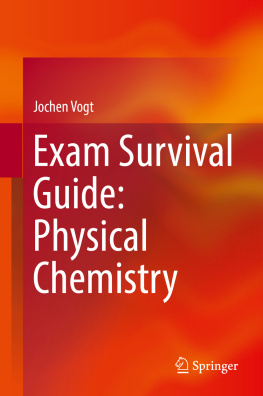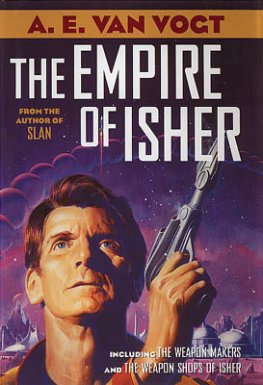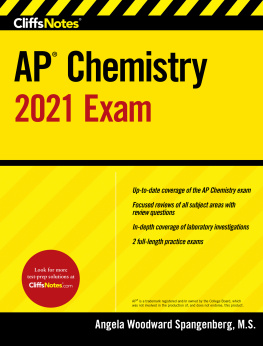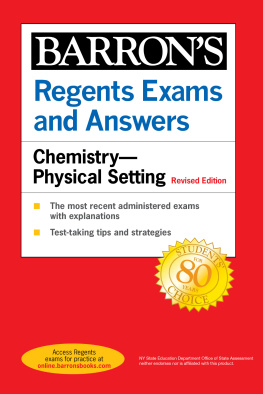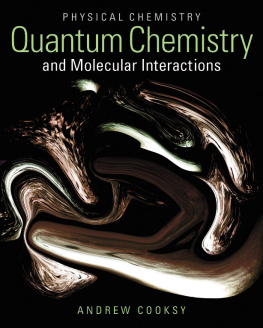Jochen Vogt - Exam Survival Guide: Physical Chemistry
Here you can read online Jochen Vogt - Exam Survival Guide: Physical Chemistry full text of the book (entire story) in english for free. Download pdf and epub, get meaning, cover and reviews about this ebook. year: 0, publisher: Springer International Publishing, Cham, genre: Computer. Description of the work, (preface) as well as reviews are available. Best literature library LitArk.com created for fans of good reading and offers a wide selection of genres:
Romance novel
Science fiction
Adventure
Detective
Science
History
Home and family
Prose
Art
Politics
Computer
Non-fiction
Religion
Business
Children
Humor
Choose a favorite category and find really read worthwhile books. Enjoy immersion in the world of imagination, feel the emotions of the characters or learn something new for yourself, make an fascinating discovery.
- Book:Exam Survival Guide: Physical Chemistry
- Author:
- Publisher:Springer International Publishing, Cham
- Genre:
- Year:0
- Rating:3 / 5
- Favourites:Add to favourites
- Your mark:
- 60
- 1
- 2
- 3
- 4
- 5
Exam Survival Guide: Physical Chemistry: summary, description and annotation
We offer to read an annotation, description, summary or preface (depends on what the author of the book "Exam Survival Guide: Physical Chemistry" wrote himself). If you haven't found the necessary information about the book — write in the comments, we will try to find it.
Exam Survival Guide: Physical Chemistry — read online for free the complete book (whole text) full work
Below is the text of the book, divided by pages. System saving the place of the last page read, allows you to conveniently read the book "Exam Survival Guide: Physical Chemistry" online for free, without having to search again every time where you left off. Put a bookmark, and you can go to the page where you finished reading at any time.
Font size:
Interval:
Bookmark:
- Read the problem text carefully.
- (a) Which quantities are given?
- (b) What is going to be calculated?
- (c) Analyze the problem text with regard to special key words.
- (a)
- Use your experience to identify the essential issues .
- (a) Relate the problem to a topic in physical chemistry.
- (b) Identify matches with contents from lectures, seminars, and laboratories.
- (c) Make a sketch that collects and illustrates the important facts.
- (d) Narrow the problem down as far as possible to identify the essential issues that are inevitable for the solution of the problem.
- (a)
- Assess the points you do not yet understand.
- (a) Think pragmatically! Distinguish those details you consider crucial from those that are merely decorative.
- (b) If crucial details are lacking, reflect again on the essential issues that might be missing.
- (c) If you think that essential quantities are undefined in the problem text, will these quantities be cancelled out at the stage of the mathematical solution?
- (d) Based on your experience, reflect on the expected results.
- (e) Be critical: are you convinced that you have found the correct approach?
- (a)
- Work out the solutiontranslate the problem into the language of mathematics
- (a) Write down the key equations on the basis of the essential issues identified.
- (b) Reflect on potential technical difficulties, e.g., those related to undefined quantities (see above).
- (a)
- Accomplish the solution
- (a) Think pragmatically! Possible technical difficulties may be resolved by the solution.
- (b) If you have obtained results, assess their plausibility.
- (c) Reflect again on the solution. Are you convinced that you have found the correct solution?
- (a)
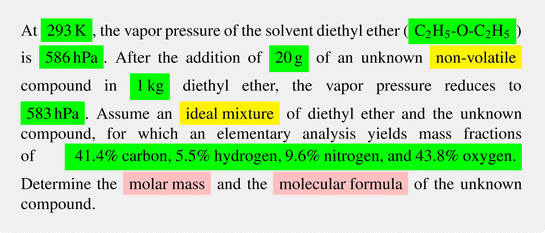
Font size:
Interval:
Bookmark:
Similar books «Exam Survival Guide: Physical Chemistry»
Look at similar books to Exam Survival Guide: Physical Chemistry. We have selected literature similar in name and meaning in the hope of providing readers with more options to find new, interesting, not yet read works.
Discussion, reviews of the book Exam Survival Guide: Physical Chemistry and just readers' own opinions. Leave your comments, write what you think about the work, its meaning or the main characters. Specify what exactly you liked and what you didn't like, and why you think so.

